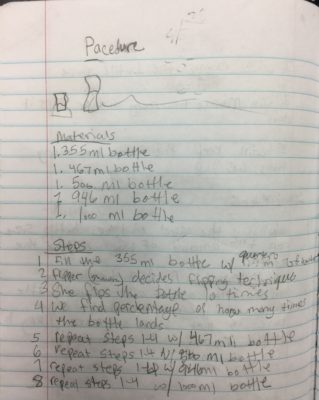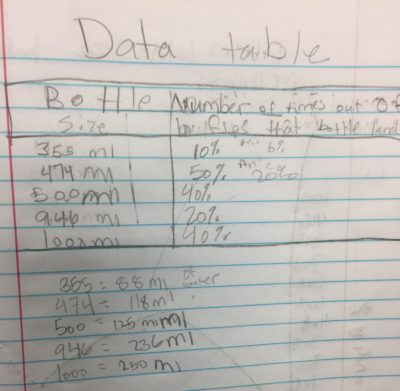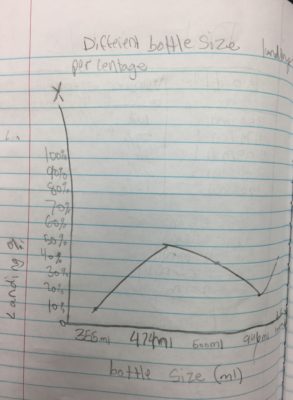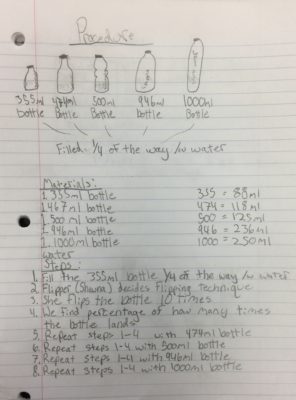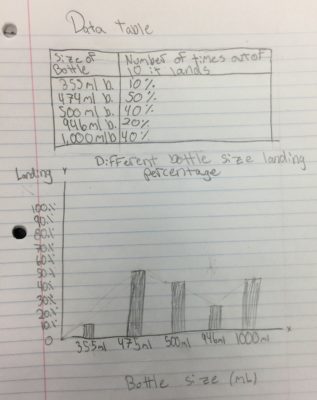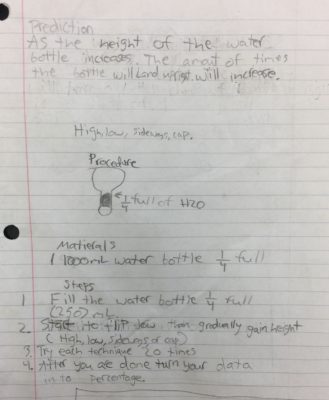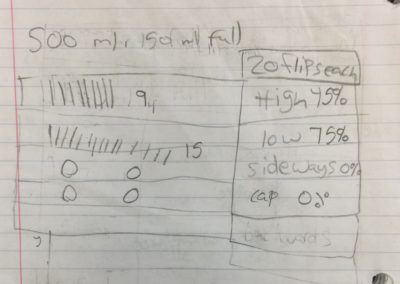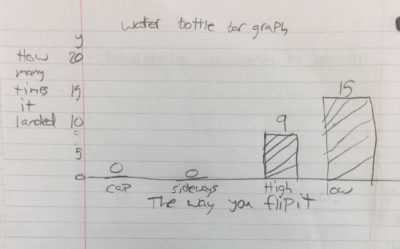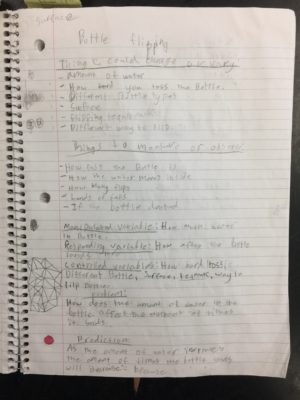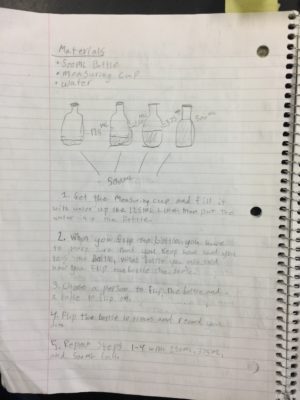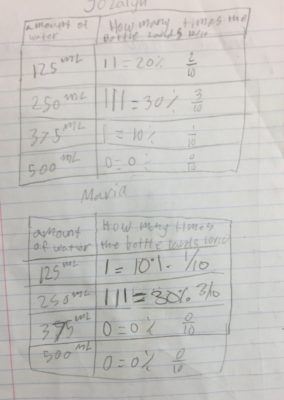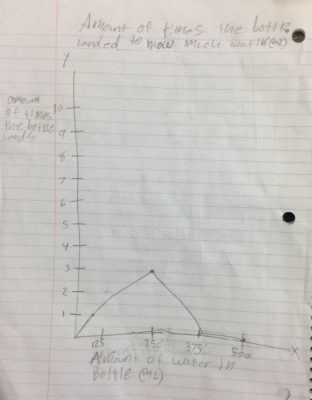This post was originally written on the CORELaborate blog here.
Last week my 6th graders used Inquiry Boards to design and conduct experiments flipping water bottles. I took photos of a few of their lab write-ups and graphs to show the great work they did. Using Inquiry Boards makes the lab write-up process much easier for my 6th graders. I’ve been using Inquiry Boards for years now and they do not disappoint. Click on any of the photos to see a full sized version.
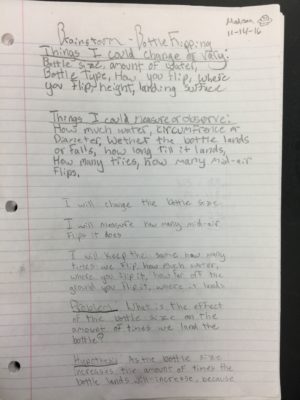
Here’s one student’s notes from the Brainstorm and Choosing Variables Inquiry Boards. The student also has her Problem question and Hypothesis here.
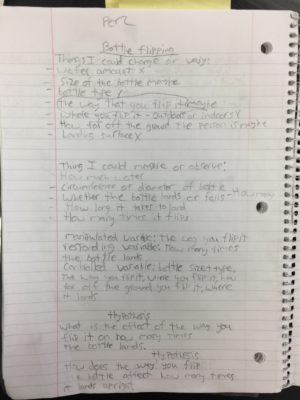
Here’s another student’s notes as the team planned their bottle flipping experiments using the Inquiry Boards.
After students graph their data I have them write their conclusions on Google Docs. I send the assignments to students using Google Classroom so that I can use Goobric to read them, score them and give students feedback.
Here’s one conclusion:
“We fiipped a water bottle ten times and changed the amount of water in the bottle along the way. My claim is that when a 500ml bottle is filled up half way it will land more times. My evidence is when the bottle was filled with 125ml of water the bottle landed 1, when it was filled with 250ml it landed 3 times, when the bottle with 375ml it landed 0 and the same for 500ml of water. I think this happened because there was enough water to land the water bottle with out it bouncing around the table. My evidence supports my claim because it shows that the water bottle landed more when it was filled half way.”
Here’s another conclusion:
“We took a 500ml water bottle and filled it 125ml then had Makai and Connor flip it 10 times each. Then they flipped it with 250ml, 375ml, and 500ml. My claim is that both my group and group 1 were right that with little water the bottle will not flip well but with it at the middle it does good and with a lot the bottle does bad. My evidence is that with 125ml we only got 1 time it landed. With 250ml we got 3 lands. With 375ml we were back to 1 land. And with 500ml we got 0 lands. I think this happened because with little water there is not much water for the bottle to land with. But with a lot of water the bottle can not do a complete flip. My evidence supports my claim because it was accurate with the other teams and the other team that had the same experiment got the same information.”
Here’s another conclusion:
“In class we flipped different sizes of water bottles in class to see which size is best for flipping/showing off your savage skills. My claim is that the 475 mL bottle is the best for flipping. My evidence is out of the ten times Shawna flipped the 475 mL bottle, it landed five times. The other bottles landed between one and four times. I think this happened because the bottle has a bigger base and the water we put in it added even more volume to the base, making the bottom of the bottle heavier and more likely to land. My evidence is that the 475ml bottle landed upright 50% of the time and it supports my claim because it shows that it landed more then the others did.”
Here’s another conclusion:
“We tried different ways to flip the water bottle and we recorded our data. Our first try was we tried to flip it high and we landed it 9 of 20 (45%). Then we tried flipping it low and we landed it 11 out of 20 (55%). After that we tried flipping it sideways and landed it 0 times. Our final try was to try and cap it and we landed it 0 times. My claim is flipping high and low is easier than flipping sideways and trying to cap it. My evidence is we could not land a sideways flip or a cap but we landed the high and low about half of the time. I think this happened because You need to be a little more skilled of a bottle flipper to land it sideways or on the cap. My evidence supports my claim because we landed it 0 times when we tried to flip it sideways and 0 when we tried to cap it.”
Overall, students wrote much better reasoning sections this time around! I think the change I made to the CER student guide was actually helpful! Whew!

